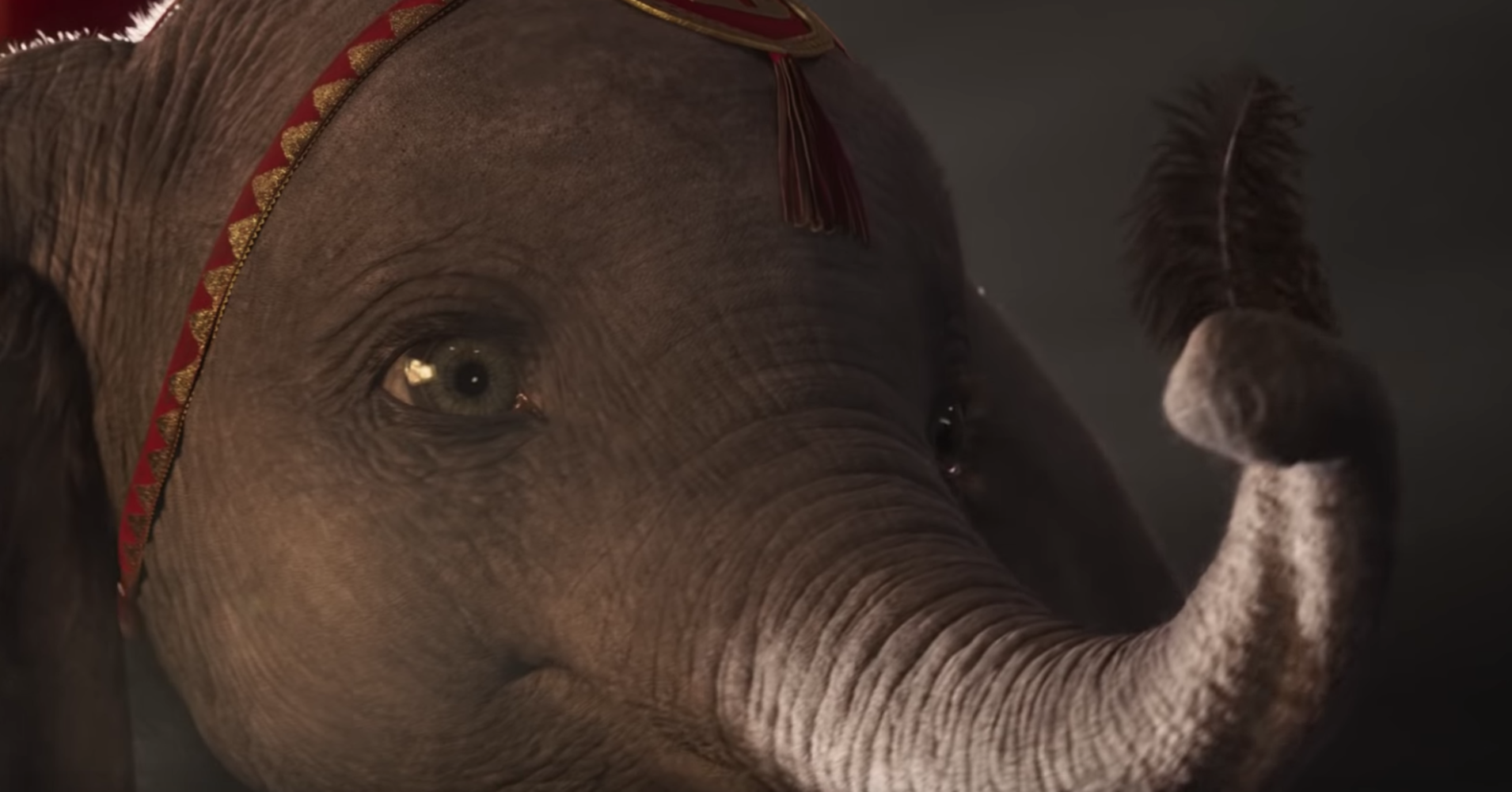[ad_1]

When it comes to Tim Burton’s live-action “Dumbo,” we have to talk about the elephant in the room: Why doesn’t Dumbo talk?
Disney’s 1941 animated movie tells the story of an outsider ― a floppy-eared pachyderm who overcomes his haters to take flight, largely with the help of his encouraging (and particularly chatty) rodent BFF, Timothy Q. Mouse. Though Dumbo and his mom, Mrs. Jumbo, aren’t particularly loquacious in the animated film, all the other animals seem to never stop babbling, including the crows, a stork and the obnoxious elephants who try to bring Dumbo down.
From the upcoming movie’s trailers and teasers, it became pretty obvious the new cast of human characters, led by Danny DeVito, Eva Green, Michael Keaton and Colin Farrell, would be left to do all the talking. Other than Dumbo’s escapades in the air, the animals would basically be held to their real-world limitations of mouse squeaks and elephant trumpets.
In an interview with HuffPost, producer Justin Springer and writer-producer Ehren Kruger explained why the movie would be grounded in a more human perspective.
“One of the things I very much wanted to do was to be able to transport an audience to make them feel like they were part of Dumbo’s circus,” Kruger said. “What an amazing experience it would’ve been if Dumbo were real. If there were a real flying elephant, what would it be like to be part of his family? That’s really what drove the decision to tell the classic story that we all know and love from a different perspective, through human eyes, and really involve the audience as if they were there in the golden age of the circus and witnessing the discovery of this amazing creature.”
With this reimagining of the story, many of the problematic elements from the original were discarded, including the crows.
Over the years, the jive-talking, smoking crows from the 1941 version have been brought up time and time again as stereotypically black caricatures. Making matters worse, they’re led by a bird named Jim Crow, named for the racial segregation laws and voiced by a white actor.
Kruger explained the exclusion of the crows really came down to the overall exclusion of talking animals.
“Early on, I made the decision [to exclude talking animals] in the spirit of realism and because Dumbo never talks in the animated [version], Jumbo has a line or two, and they’re really the core of our story,” Kruger explained. “We were going to not have this be a talking animal picture. That meant pulling back on a few characters from the animated film.”
On the crows, he added, “That’s just a section of the original movie that didn’t fit with the story we were telling.”
Some iconic moments were adapted for the live-action version, like those pink elephants on parade, which you might remember as one of the most captivating (and traumatizing) visuals from your childhood.
In the original cartoon, the scene comes about after Dumbo drinks from a bucket of water that was inadvertently spiked with champagne. He sees haunting visions of colorful elephants as a result of his intoxication and wakes up in a tree the next day, not realizing how he got there.
Instead of reviving the nightmarish sequence, Burton’s movie uses trippy bubble artistry to capture the spirit of those visuals, which you can see a glimpse of in the trailers:
“One of the opportunities and joys is to take the things most iconic about the original and find ways to get them into your film,” Springer said. “And as Ehren was saying, we really wanted to create a plausible reality in 1919 that the circus lives in to transport the audience to that place.”
The iconic pink elephant moment was brought to the screen by slightly pushing the bounds of reality, according to the producer.
“It didn’t feel right to cut away to an entirely animated sequence and go as far down that road as the animated feature did, but it’s something we knew from the outset that had to be a set piece in the film,” Springer said.
The moment was in the script from the very beginning, but it was Burton who ultimately brought it to life. “We really wanted to ground it in what feels like might have been able to be pulled off in the circus at that time,” added Springer.
Though Dumbo isn’t seen indulging in libations prior to seeing the pink elephants, Kruger joked, “We do see Dumbo in a big tub being bathed, and I cannot say for certain if any champagne spilled in there or not.”
Early social media reactions to the movie praise its art production and design, with a special nod to the depiction of Dumbo. Much like the rest of the movie, grounding the elephant in reality was the key, Springer said.
“It was a long design process,” explained the producer. “Obviously, it’s the core character in the film, and if he’s not believable, it’s hard for the film to work, so we wanted to create that character in a way that felt like he fit into the real world but also was the cutest version of himself.”
Like in the original cartoon, Dumbo is certainly cute. But beyond his big eyes and playful personality, Dumbo’s look has an element of science to it too, specifically his famous oversized ears.
Springer continued, “We started looking at what the physics of that character would be, and how we’d have to size his ears so it felt like proper physics were at play there, but also not having his ears so big that when he’s landing and walking around it looks overly silly.”
Dumbo uses those realistic ears to fly into theaters later this month.
[ad_2]
Source link

